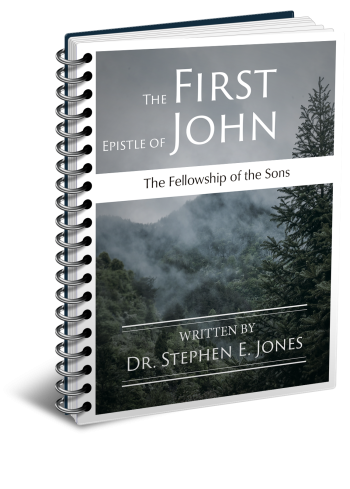Latest Posts
View the latest posts in an easy-to-read list format, with filtering options.

An in-depth commentary of the first epistle of John in the Bible.
Category - Bible Commentaries

John’s first epistle, in many ways, is an extension of his gospel and a bridge to his book of Revelation. Both the gospel of John and his first letter deal with origins and foundations. Both are commentaries on the book of Genesis, revealing the nature of life and light (that is, truth).
The purpose of the gospel of John is to present Jesus as the manifested Christ. John set forth eight miracle-signs (semeion) in his gospel, which “manifested His glory” (John 2:1). John was explaining in greater detail the revealed glory that he saw on the mount when Jesus was transfigured (Matt. 17:1, 2) in front of him.
This seminal event had made a deep impression on John, and it proved to be just the start of a progressive revelation of the meaning of glory itself. His glory manifested as light. Light is a revelation of truth.
John’s first epistle shows how Christ’s glory is a promise to all of the sons of God who are in fellowship and unity with Christ and with each other. His letter reaches out to the public at large, presenting the path by which all may attain the same fellowship and receive the same life, light, and glory.
John’s message takes us back to the first creation which is recorded in the book of Genesis. There is where we learn the manner and purpose for creation. There we learn that man was created in the image of God, and that we were meant to be sons of God. Though Adam sinned at that time, creating a lengthy detour, God’s purpose will be fulfilled in the end, for Christ died to that end (1 John 2:2).
Important, too—especially when addressing Greeks in Ephesus—was the fact that a good God created all things. This is the biblical (Hebrew) view of the origins of heaven and earth, spirit and matter.
The average Greek in the first century believed that matter was created by the demiurge, corresponding roughly to the biblical “devil.” Greek culture at that time believed that spirit was good and matter was evil. The Bible insists that a good God created both the heavens and the earth, giving no credit to the demiurge.
This theme forms the backdrop for the introduction to John’s gospel as well as the entire epistle. Its importance is seen in the fact that Jesus Christ came to earth in a physical body. The glory of God manifested in His physical body on Mount Hermon.
Later we find the Holy Spirit coming on the day of Pentecost to indwell human flesh as a temple of God. John had experienced this personally. Having already been justified by faith in a Passover-level experience, he was present in the upper room on the day of Pentecost. So he testified in 1 John 3:2 that “now we are children of God.”
Yet he understood that there was more to come, for he continued by saying, “and it has not appeared as yet what we shall be.” He went on to explain that when Christ appears, “we shall be like Him.” This implies that we are not yet fully “like Him” until His second coming. His coming will fulfill the feast of Tabernacles.
Tabernacles is the third manifestation that will complete this long progression toward full sonship. The entire revelation of Christ rests upon the premise that a good God created matter and that God’s intent is for the Spirit of God to indwell human flesh.
In John’s day the book of Genesis ran contrary to the foundations of Greek religious culture. Yet it was John’s message and the core of Kingdom culture as a whole. So the apostle wrote in John 1:12, 13,
12 But as many as received Him [Christ], to them He gave the right to become children of God, even to those who believe in His name, 13 who were born [gennao, “begotten”] not of blood [bloodline], nor of the will of the flesh, nor of the will of man, but of God.
Whereas Greek religion taught that a good God would never taint Himself with evil flesh, John taught that God had manifested in human flesh in order to fulfill His purpose for creating matter in the first place. Not only was Jesus the Son of God by virtue of being begotten by the Father (Matt. 1:18), but likewise, all who become part of His body are given the right to become children of God.
The children of God are all begotten by God, or else they would not be His children. Though Adam was originally a son of God (Luke 3:38), he had lost that position through sin. Christ came to restore mankind to that original purpose. His death and resurrection assured the plan’s success, but the outworking of that plan was to affect each person at different times as faith is instilled in each.
Given the problem of sin, the only way to become a son of God (or to regain that which was lost in Adam) is to follow the divine plan. Everyone will fulfill the plan in the end, but not all at once. The feasts of the Lord are the prime revelation of the progressive order in which we all become sons of God.
The feasts apply both personally and corporately. As individuals we progress through Passover, Pentecost, and Tabernacles, each being a different experience. From the corporate standpoint, the same feasts reveal the ages during which time creation itself progresses from the fall of man to the full manifestation of the Kingdom covering the entire earth, when all things are put under the feet of Christ (1 Cor. 15:28).
John’s first epistle focuses primarily on the personal application of these feasts, showing us how to become sons of God and commenting on the evidence of sonship seen in our lives.